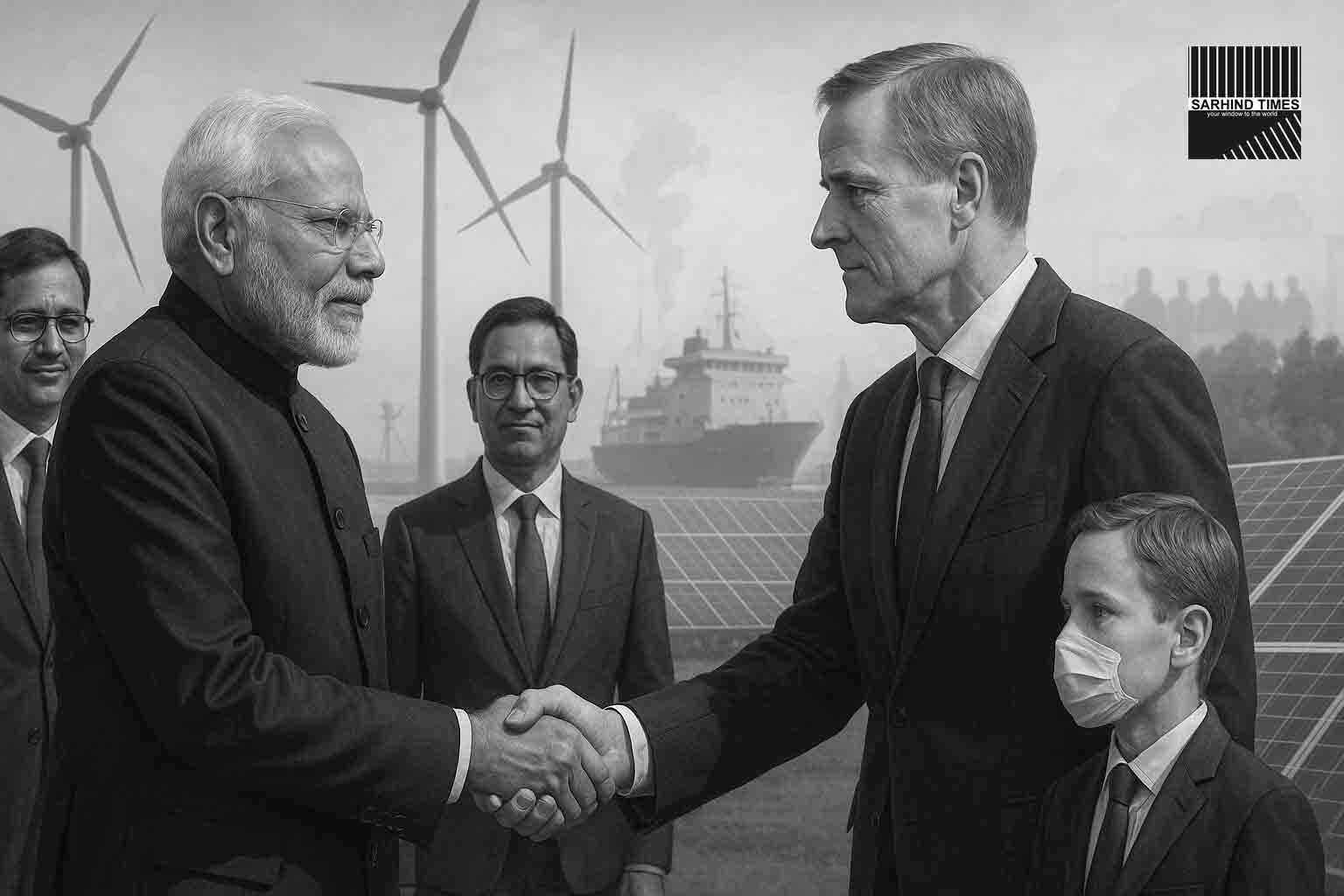Introduction: From Delhi to Oslo, Climate Brings Nations Together
Norway’s Environment Minister has declared India a vital partner in global climate action, underscoring the shared goals of emission reduction, climate justice, and sustainable growth. This recognition strengthens the bilateral relationship between a Nordic climate leader and a South Asian economic powerhouse—two nations with very different development trajectories, yet united by a common green vision.
This partnership matters beyond symbolism. It highlights the growing role of international cooperation in financing, technology transfer, and credibility—the building blocks of real climate progress.
India’s Climate Role on the Global Stage
India is increasingly recognized as a climate leader in the Global South:
- Commitments to 500 GW of renewable capacity by 2030.
- International Solar Alliance (ISA) spearheaded with France.
- LiFE (Lifestyle for Environment) movement linking personal behavior with global climate action.
- Advocacy for climate justice, emphasizing that historical emitters must shoulder greater responsibility.
For Norway, partnering with India is both pragmatic (working with a major emitter and market) and strategic (showcasing global solidarity).
Norway’s Climate Identity
Norway has built its reputation as a climate-conscious nation:
- Major investments in renewable energy, EV adoption, and green shipping.
- Domestic carbon tax and one of the highest per-capita EV ownership rates.
- Sovereign wealth fund divesting from coal and oil companies.
Yet, Norway also grapples with contradictions—it remains a major oil and gas exporter. Partnering with India allows it to project climate credibility abroad while contributing to global decarbonization.
Shared Goals in India–Norway Cooperation
1. Emission Reduction
- Collaboration on renewable energy, offshore wind, and hydro technology.
- Joint projects on EV infrastructure and sustainable shipping.
2. Climate Justice
- India emphasizes equity—developing nations need finance and technology to transition.
- Norway agrees on fair burden-sharing, signaling readiness to co-fund initiatives.
3. Finance and Investment
- Norway’s sovereign wealth fund and green investors could channel billions into Indian renewables, hydrogen, and bio-economy sectors.
4. Technology Transfer
- Norway’s strengths in offshore wind, maritime green tech, carbon capture could be adapted for Indian conditions.
5. Policy Exchange
- Joint platforms for research, regulation, and policy harmonization.
- Comparative approaches: Norway’s success in EVs vs. India’s solar expansion.
Why This Partnership Matters Globally
- Credibility: Partnerships between developed and developing nations demonstrate climate solidarity.
- Scaling Solutions: India provides scale; Norway provides expertise. Together, they create replicable models.
- Financing the Transition: With trillions needed, bilateral and multilateral cooperation is essential.
- North–South Bridge: India and Norway embody a bridge between industrialized Europe and the Global South.
Opportunities for India
- Access to Green Capital – Norway’s sovereign wealth fund could accelerate Indian projects.
- Technology Access – Maritime, wind, and CCUS technologies from Norway.
- Policy Partnerships – Learning from Norway’s EV adoption success.
- Diplomatic Leverage – Strengthens India’s credibility at global climate negotiations.
Risks and Constraints
- Asymmetry – Norway’s oil exports vs. India’s coal dependence create perception gaps.
- Follow-Through – Bilateral MoUs often falter without sustained political attention.
- Public Skepticism – Partnerships must translate into real, visible outcomes (projects, jobs, health benefits).
Comparative Policy Lessons
- Norway’s EV Success – Through incentives, EVs dominate new car sales. India can adapt policies but must manage affordability.
- India’s Solar Push – Scale unmatched globally; Norway can learn about mass deployment in developing markets.
- Mutual Exchange: This isn’t one-sided—both countries bring strengths.
Conclusion: A Test of Green Diplomacy
Norway calling India a “vital partner” signals more than goodwill—it represents a new phase of climate diplomacy where partnerships are judged not by declarations but by outcomes.
If India and Norway can marry scale with innovation, finance with execution, and justice with ambition, they could set a template for 21st-century climate cooperation.
For India, it is another chance to show that climate leadership and economic development can go hand in hand. For Norway, it is an opportunity to prove its climate credibility beyond its borders.
This partnership, if nurtured, could become a model of shared responsibility in an unequal world.
#ClimatePartnership #IndiaNorway #GlobalClimateAction #ClimateJustice #GreenDiplomacy #SarhindTimes #SustainableFuture #RenewableEnergy






















+ There are no comments
Add yours